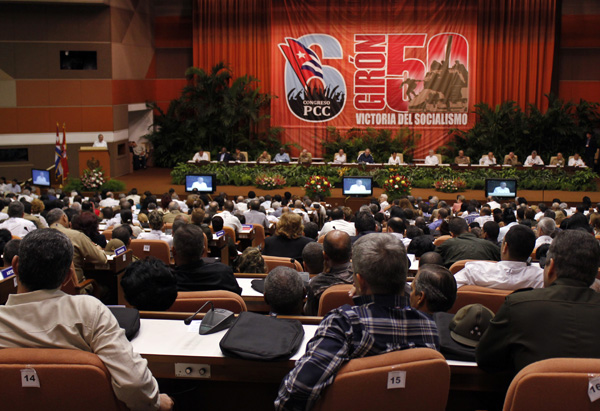Reading Cuba’s New Reform Guidelines (I)
Daisy Valera

I begin reading the first page of the tabloid that has the following name: “VI Congress of the Communist Party of Cuba. Information on the results of the discussion of the guidelines of the economic and social policies of the party and the revolution.”
I would like to suggest that someone change the title to something more down to earth like: “Economic and social changes that will be shouldered by the Cuban people” or “Social-economic policies to be fulfilled by the citizens of Cuba.”
But to continue, in no part of this “historic document,” as all official journalists call it, does there appear the names of those who wrote the pamphlet or the delegates who approved the guidelines in the congress last April.
What a shame. Come tomorrow we won’t be able to thank them for their timely and lucid ideas, though it goes without saying that nor will we know who to blame if things begin to turn ugly.
We finally learned that the public’s opinions were recorded and grouped together in 781,644 suggestions. Of those, 50,000 were not accepted or the analysis of them was postponed, but the good news is that 395,000 were incorporated.
I fantasize about how interesting it would be to read the ideas and arguments of people. Curiosity is eating at me to know what were the 50,000 suggestions rejected by the activists of the Communist Party, but I know I’ll never get my hands on that information.
I’m sure that someone is in charge of keeping that list securely filed away with an official stamp that says something like “USEFUL INFORMATION FOR THE ENEMY.”
Moving on, to finish reading all the guidelines is a titanic task, but it would be silly if I didn’t dare make it to the end.
Each line helps me see a little more how the future will be.
The part on the model of economic administration has a positive contribution in the first guidelines. Now, for the changes that will be made in the managerial sector, these will be told to the workers and their opinions will be listened to.
In the first edition (issued months before the Congress) it said that changes would be made in a planned way with order and discipline, and although these changes implied and imply layoffs, the word “workers” didn’t appear anywhere.
In the final document, it seems that they’ll proceed with the “layoffs” but now the report uses a little more tact in referring to “the formerly employed.”
Other guidelines relating to economic administration speak of the liquidation of unprofitable companies and of preventing those from inflating their payrolls, as well as workers’ pay depending on output legitimated by this type of piece work.
The new guidelines 31 and 32 state quite clearly that they will reduce the budgeted state companies to a minimum and that they will not create new ones for providing services or producing goods.
This speaks for itself. It seems that the numbers of unemployed will reach a million and a half, and that at some moment it was heard that job creation is far removed from the plans of the party/government.
In the section on “macroeconomic policies” it is left crystal clear that the pay of workers will only increase if there are increases in the production of goods and services.
This was a disappointment for those who supported the layoffs because they were thinking that such an action would mean an immediate increase in their own wages.
The document does not explained how monetary planning will be carried out or how the dual currency will be unified, though it does state that for this to occur they’ll need to work in the objective and subjective plane.
One point in favor of the future for the unemployed is that credit instruments will be created to allow these individuals to start private business, but up until now no mention has been made as to how high the interest on such loans will go.
The centralized character of pricing will remain, and a more rigorous selection will be made of management executives who will be involved in overseas transactions.
Do these lines perhaps admit the fact of the existence of a group of representatives of state companies in overseas transactions who have, up until now, misappropriated funds and gotten rich at the expense of Cuban workers?
To be continued…






Comments are closed.